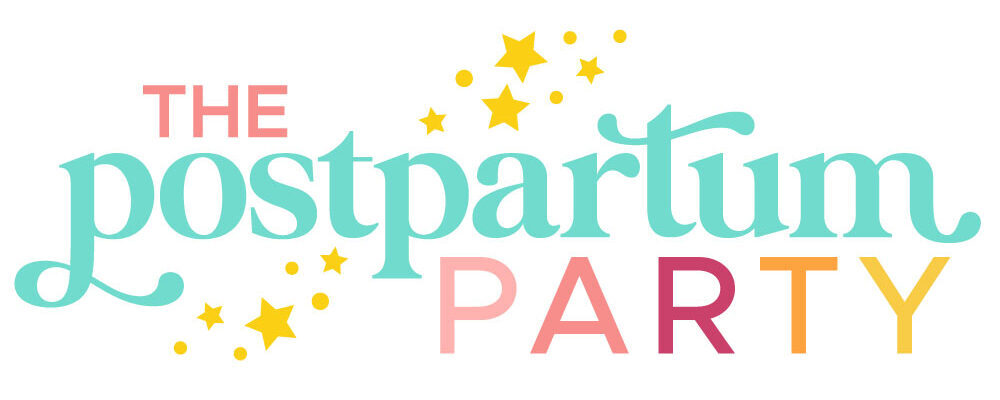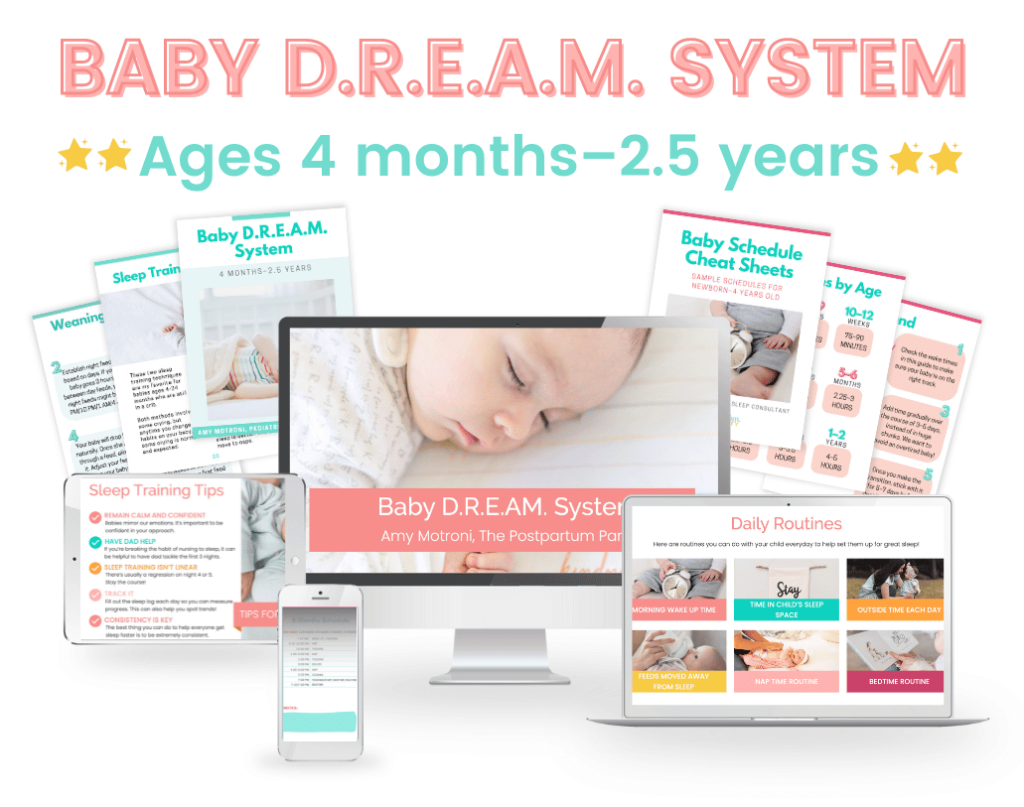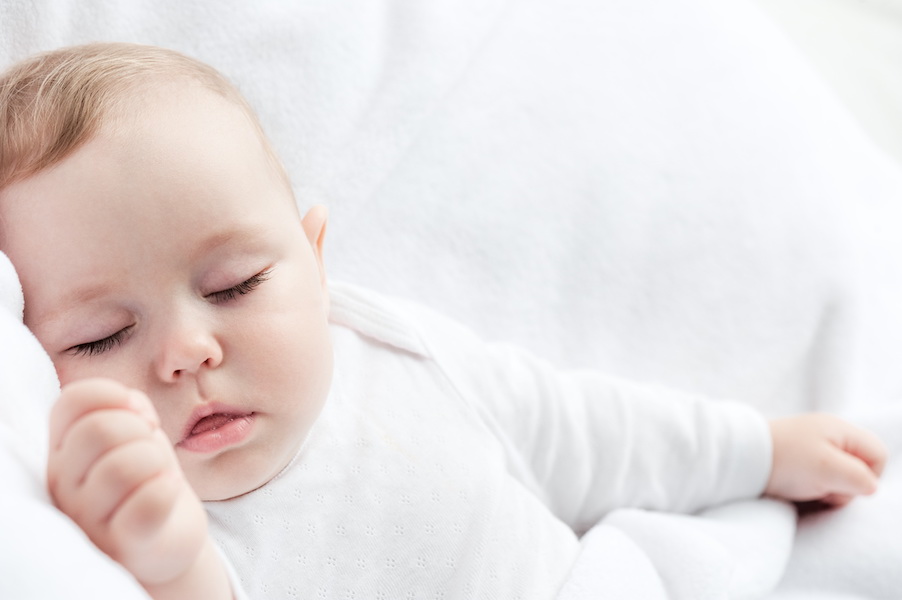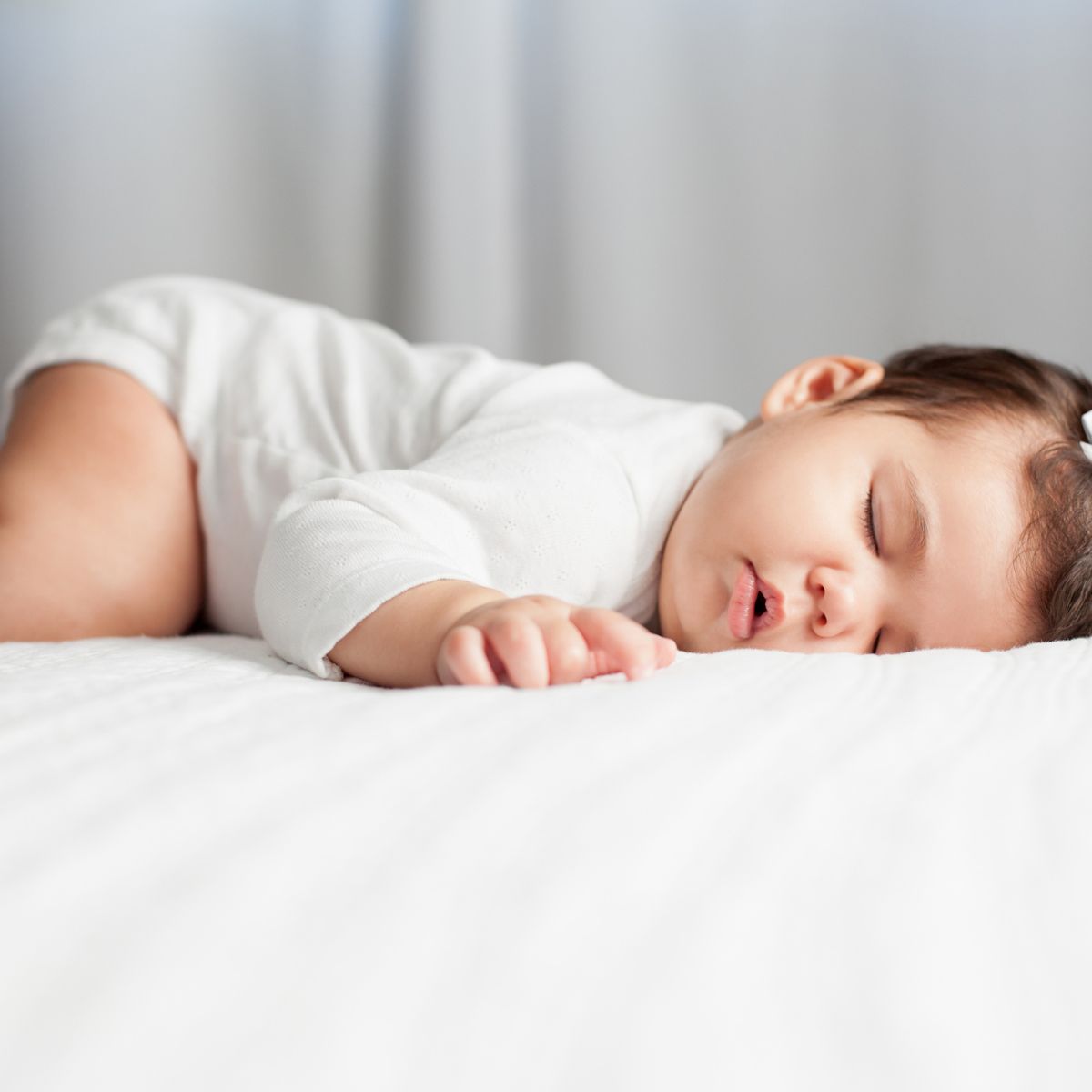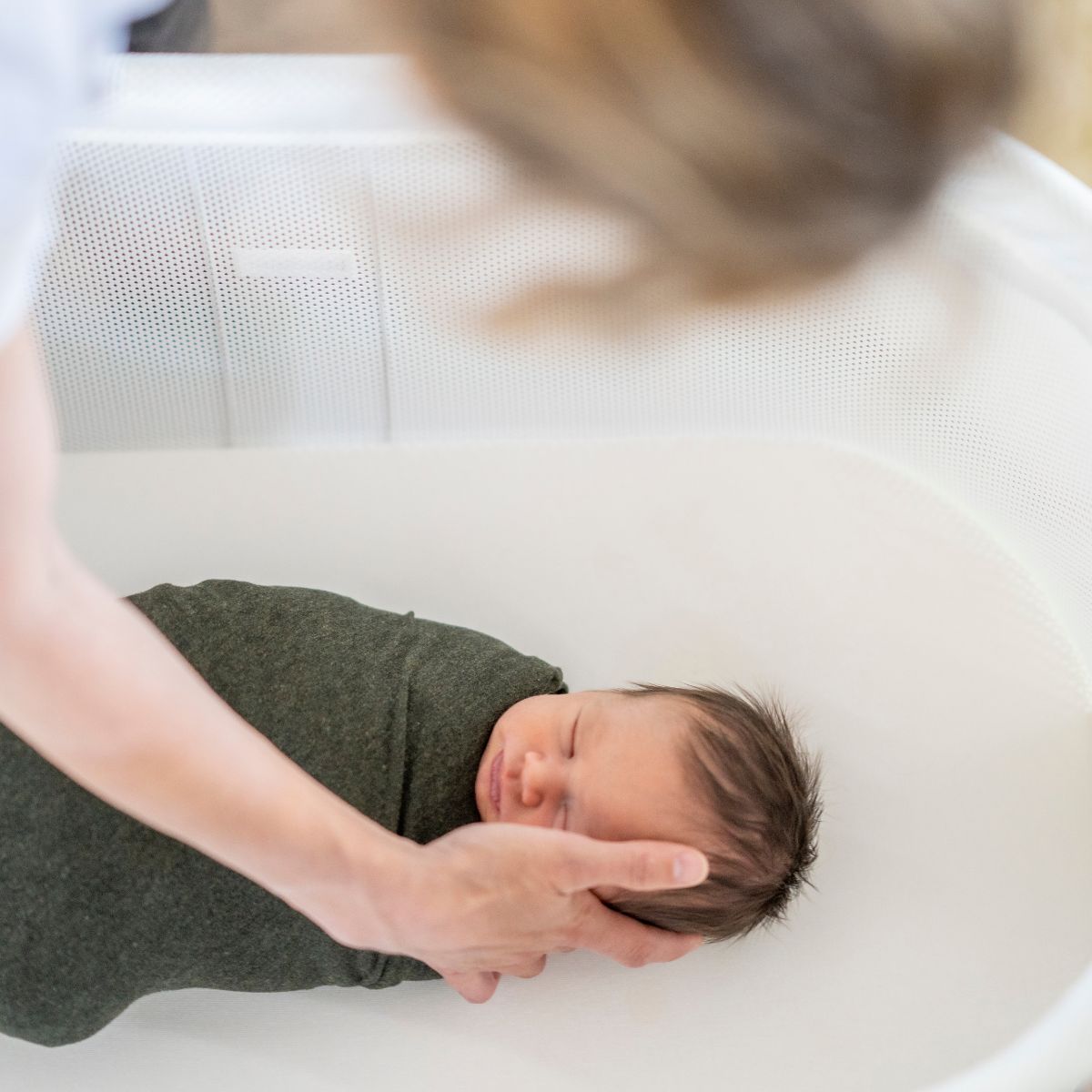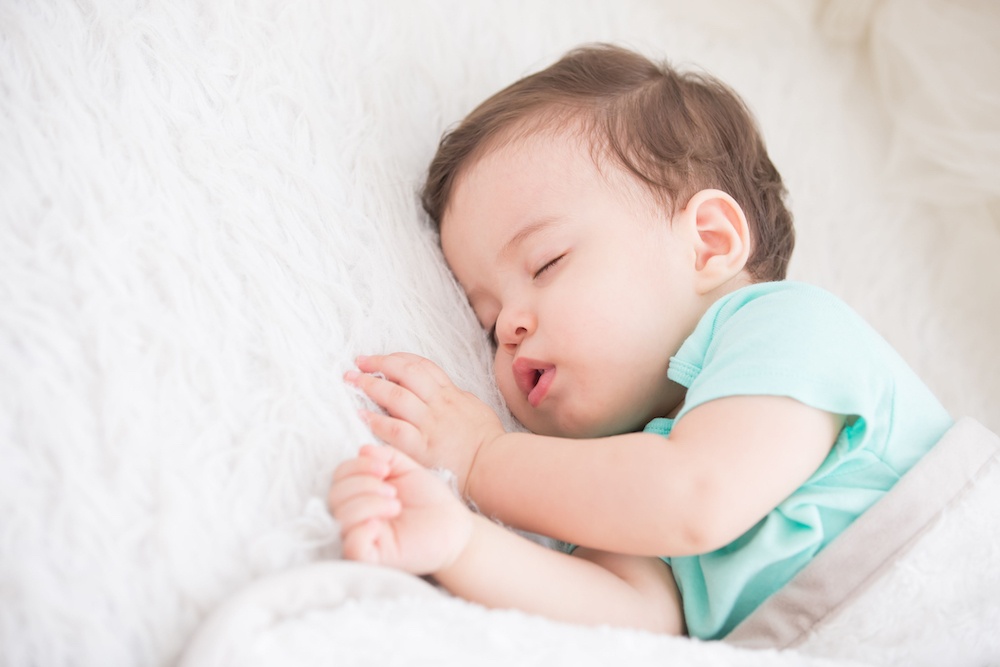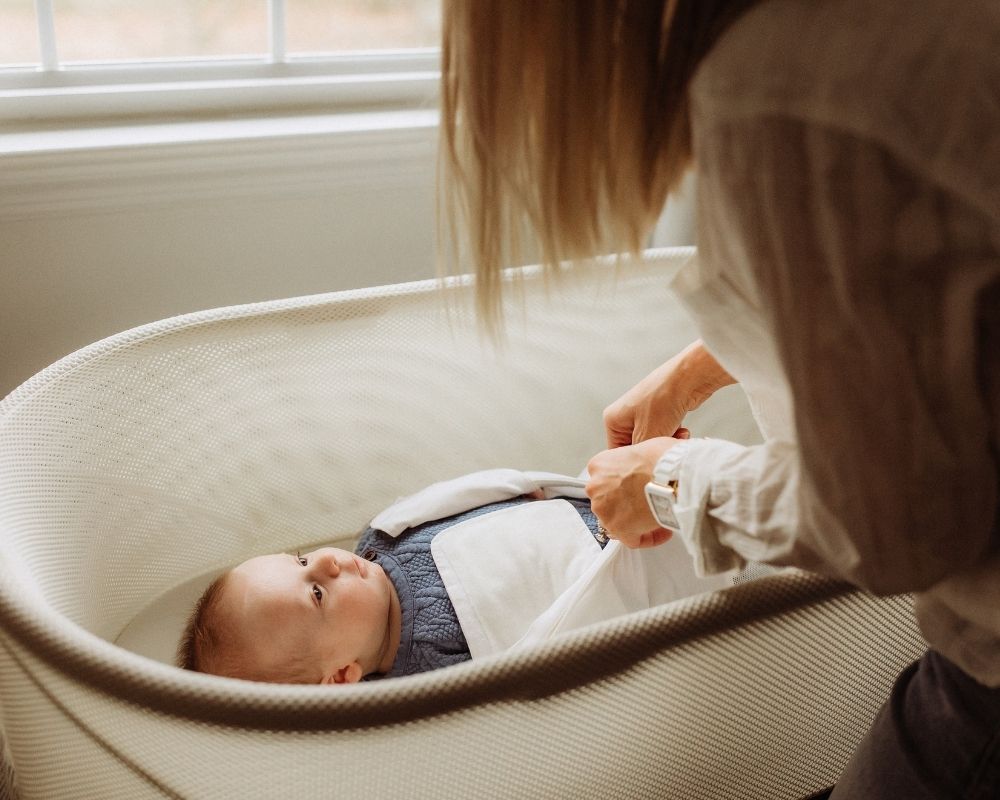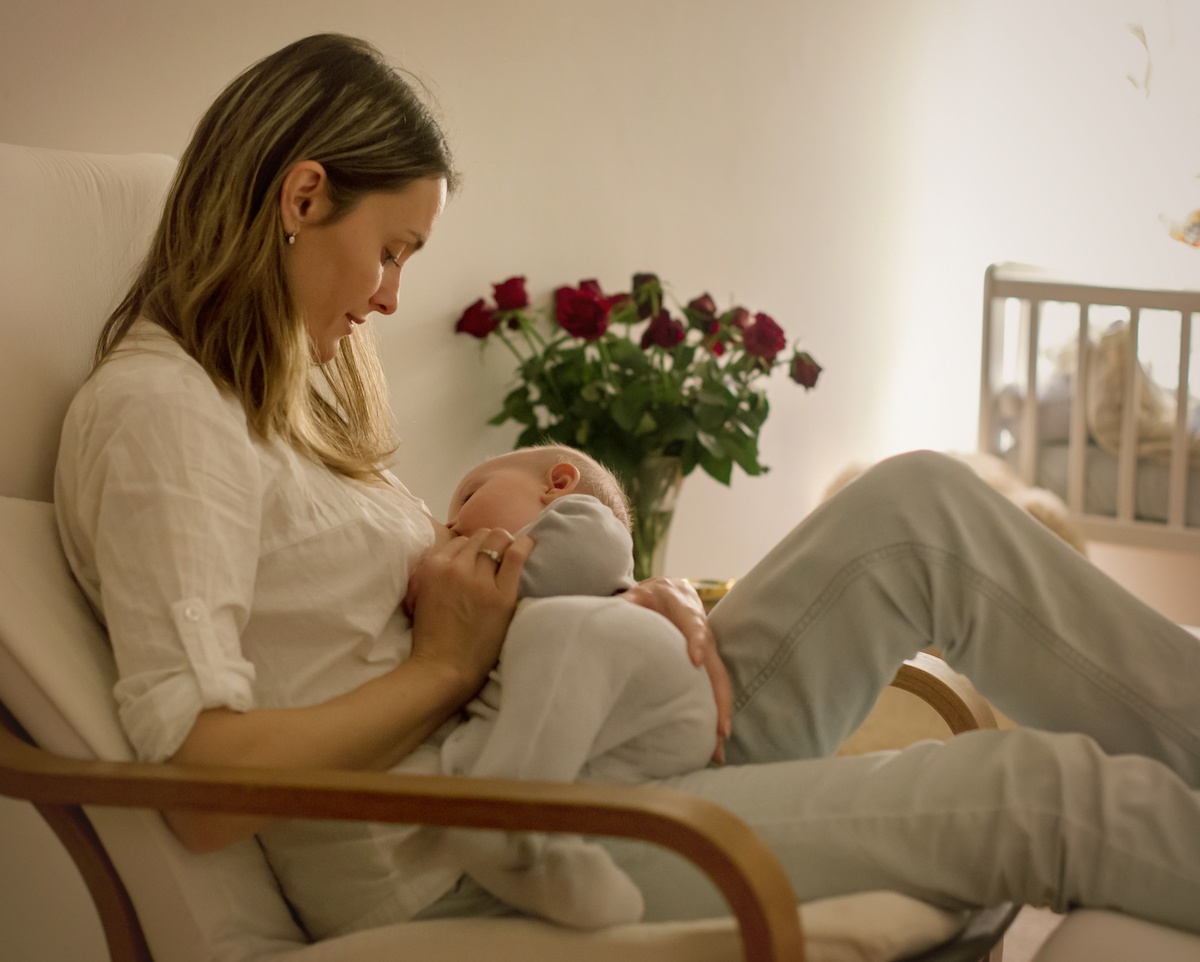Are you ready for your baby to say goodbye to your SNOO? Get tips for transitioning from SNOO to crib from a certified Pediatric Sleep Consultant.
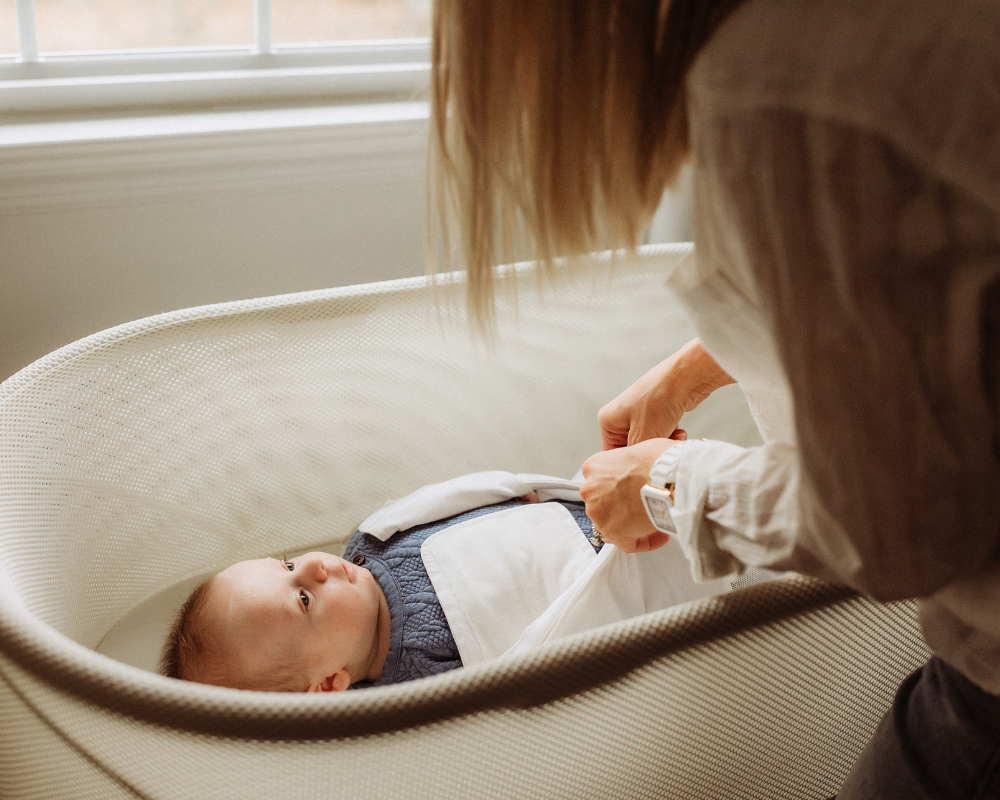
This post and the photos within it may contain Amazon or other affiliate links. If you purchase something through the link, I may receive a small commission at no extra charge to you.
I’ve worked with multiple families who have successfully made the transition out of the SNOO. I’ll share my step-by-step process for how we did it as well as tips for transitioning from SNOO to crib.
Want a realistic newborn sleep schedule? Download my free newborn sleep schedule to see what a day with your newborn might look like. Click here to grab it. It’ll be super helpful.When Should I Transition Out of SNOO?
Your baby can sleep in a SNOO up until 6 months old, or until they can get on their hands and knees, according to the SNOO website.
That being said, many of the parents I’ve worked with are ready to start transitioning out of the SNOO at 4 months.
When babies hit the 4 month sleep regression their sleep often becomes chaotic and unpredictable.
Many parents find it a good time to wean from the SNOO and sleep train since their baby’s sleep has declined anyway.
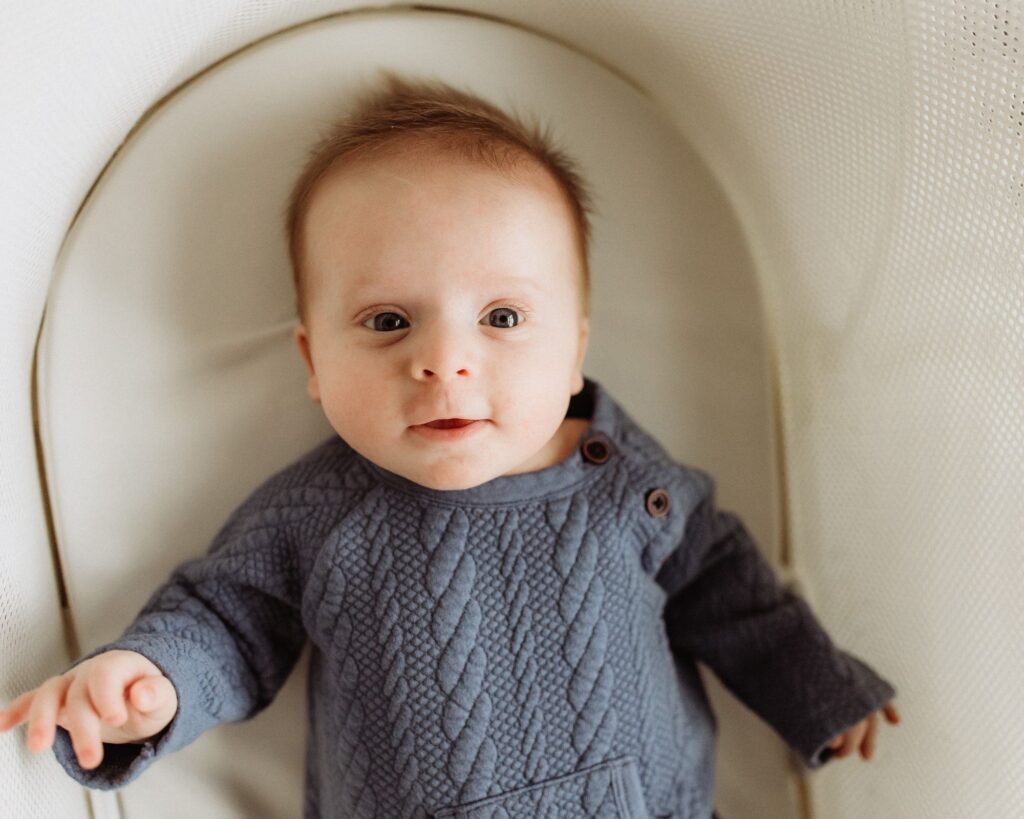
How Do You Transition Out of SNOO?
Make sure to give yourself time to make the transition from SNOO to crib to make it a smooth one for you and your baby.
Read through these tips, devise your plan, and then implement it to move your baby out of the SNOO.
1. Spend Time in Baby’s Crib
As you prepare to transition your baby to the crib, you can start getting her acclimated to her crib during her awake time.
Put your baby in the crib for about 10 minutes during her wake windows and play with her.
You can practice tummy time, play peek-a-boo, or supervise her with a few fun toys. This will help the crib become a familiar space and prevent your baby from hating the crib.
2. Use A White Noise Sound Machine
The SNOO has a built-in white noise sound machine, so you’ll need a replacement once you’re ready to transition out of the SNOO.
I personally love the Dohm sound machine, but there are plenty of other great sound machines to choose from.
3. Make The Nursery Optimized for Sleep
In addition to white noise, there are a few other items you can use to optimize baby’s sleep.
This includes:
- Blackout curtains
- A safe sleep space
- An ideal temperature
4. Move the SNOO to the Nursery
If you’re currently room sharing with your baby and want to move baby to their own room when you transition out of the SNOO, start by moving the SNOO to your baby’s nursery first.
This will also help your baby get used to the new room for sleep, while still being in their familiar SNOO.
5. Transition out of the Swaddle
If your baby is ready to drop the swaddle, then start the transition while they’re still in the SNOO.
You can swaddle with one arm out for a few nights, then leave the other arm out as well. You can do this process in the SNOO and then you’ll move your baby to a sleep sack when you move them to the crib.
6. Start Wean Mode
The SNOO has a weaning mode that keeps the bassinet stationary unless your baby starts to cry. As your baby settles, the SNOO returns to stationary but continues with white noise.
When you start to swaddle your baby with one arm out, you can turn the weaning mode on at the same time to help wean your baby off the constant motion of the SNOO.
7. Start at Night Time
Naps can be really tricky for babies who are under 6 months old.
It’s very common for young babies to only nap 30 minutes, so I always have my families start with night sleep first when they’re making a transition.
We want to avoid an overtired baby, so when you’re transitioning from SNOO to crib, start the transition at night first and continue to offer naps in the SNOO until your baby’s night sleep improves in the crib.
Once your baby is doing well at night, you can start transitioning to the crib for naps as well.
8. Establish A Bedtime Routine
If you don’t already have a bedtime routine for baby in place, now is the perfect time to start one. Do the same 3 to 5 activities each night to prepare your baby for bed and cue to their brain that sleep is on the way.
Make your bedtime routine one that you can do each night, even when you travel to help your baby acclimate in new places.
Your bedtime routine can include things like:
- Feed
- Two books
- Snuggles
- Pajamas
- Sleep sack
- Kiss goodnight
9. Choose a Sleep Training Method
How will you respond if your baby struggles to fall asleep when you transition them from the SNOO to the crib? You likely don’t want to replace the SNOO with new sleep props like rocking your baby to sleep.
Now is a great time for your baby to learn independent sleep habits.
Choose a sleep training method that you’re comfortable with and implement it starting at bedtime. You can implement your technique for each wakeup to help your baby adjust to the crib.
If you’re not ready to sleep train, you can also use the Soothing Ladder and go up the steps.
10. Stay Consistent
Making the transition from SNOO to crib might take time. Some babies will have no problem with a cold turkey transition, while others may struggle depending on their temperament and sleep patterns.
Stay consistent with putting your your baby in their crib for bed each night and following up throughout the night.
With time and consistency, your baby will be sleeping in their crib and you can gift or sell your beloved SNOO to another expecting mama!
Get Better Sleep with The Baby D.R.E.A.M. System
If you want someone to walk you through the process of sleep training, let me help. The Baby D.R.E.A.M. System is for babies 4 months through 2.5 years old. I’ll walk you through how to establish daily routines, sleep schedules, and sleep training techniques to help you break the sleep associations you no longer find beneficial! Check it out here.
- Practical Tips if your Toddler is Going Through A 3-Year Old Sleep Regression - April 26, 2024
- Baby Led Weaning vs Purees — Which Should I Choose? - April 25, 2024
- 10 Adorable Letter Board Pregnancy Announcements - April 25, 2024
